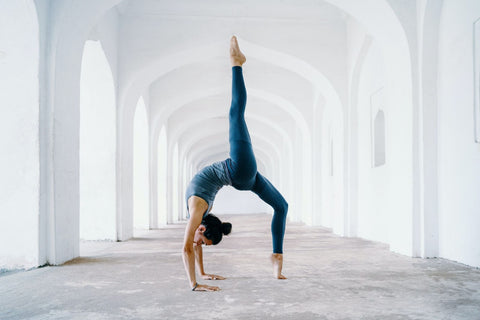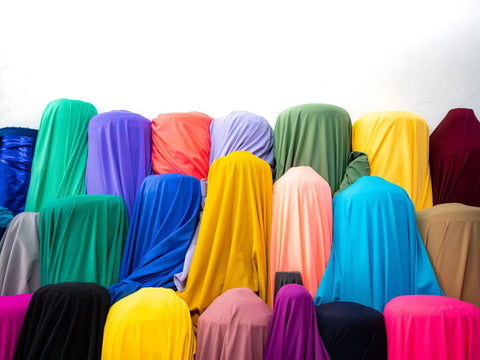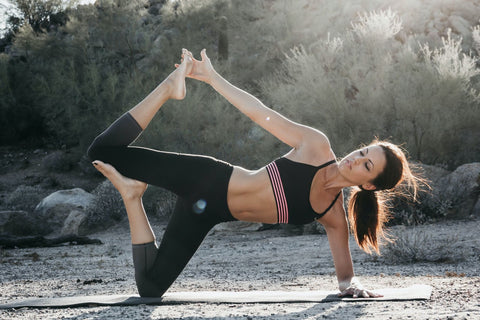
Sri K. Pattabhi introduced the western world to Ashtanga Yoga, which focuses on deliberate breathing patterns combined with specific poses to encourage an increase in the body’s temperature that releases impurities through cleansing perspiration.
Ashtanga—which means “eight-limb”—provides the body with increased flexibility and strength while allowing the mind to center itself and relax. Without the mindful breathing involved in Ashtanga yoga, the intricate postures would be nearly impossible to complete without exertion or painful pulling. The mind, however, is focused on the deliberate art of the breath, which allows the body to transcend any objections from the mind.
Ashtanga may be practiced at home or in a studio with the aid of a professional instructor—or yogi. Individuals interested in practicing Ashtanga from the comforts of home should create a soothing and open environment in preparation for practicing. The mind should be free from stress and external distractions.
An introduction to Ashtanga means allowing the body to learn the easiest contortions of the art form first. Basic poses are best for beginners whose bodies are not yet prepared for the more difficult postures. Transitions may be made into intermediate and then more difficult poses as the practitioner progresses in agility, flexibility and practice.
Ashtanga always begins and ends with chanted mantras. The poses of Ashtanga are divided into Sun Salutations, Fundamental Positions and Finishing Sequences. The sequences become harder and extend into primary, intermediate, or advanced.
To introduce the body and mind to the art of Ashtanga Yoga, discover these poses and prepare for a cleansing experience.
The Sun Salutations:
Sun Salutations “establish the calm rhythm of breathing (Ujjāyī) direction of Energy (Bandha) and concentration (Ḍṛṣti).” Poses and postures of Ashtanga flow like a river. As the movements flow, the body begins to raise its temperature and release cleansing perspiration. The Sun Salutations are numbered and begin with the body upright and ends with the body also in upright position. In between, however, the body goes through various movements that reach into the sky, hands touching the ground, body bent forward into a triangular position, the body prostrate on the ground arching into a position similar to that of a rearing cobra, and bending down once more. The positions of the Sun Salutations vary with the sequence.

The Fundamental Positions
A mixture of standing and stretching positions, the Fundamental Positions “bring the energetic and physical body in balance.” Movements again are numbered, and individuals will once again begin and end standing upright. More difficult “fundamental” movements may be added into the routine as practitioners become more advanced.
The Finishing Sequence
This is the grand finale of Ashtanga. The movements become more intricate, with practitioners finding themselves curled into balls during the sequence. Unlike the Sun Salutations and Fundamental Positions, the Finishing Sequence begins lying down and includes many movements that begin to challenge the beginner.
Once the basic series of movements have been mastered, more demanding and rigorous sequences may be integrated into the routine. Ashtanga allows the student to constantly challenge the body using the mind as power. More difficult sequences may be discovered in the primary, intermediate and advanced sequences.
Primary
Once the basic poses and postures have been mastered, the primary sequences may be introduced. The practice begins and ends in a standing position, however new positions include backward rolls and downward dog. A bridge pose also is among the primary sequence positions.
Intermediate
Students may only begin the intermediate sequence after two years of constant practice mastering the other positions. This sequence or phase of Ashtanga is called “Nāḍi Śodhana, the cleansing of the energetic channels.” Poses feature contortions that allow the limbs to unite to form perfect squares of poses and intricate bends and twists of the body. This series must not be attempted by the beginner.

Advanced
Only the most skilled and studied Ashtanga practitioner should attempt the advanced sequences. The body becomes a heralded embodiment of the art form and displays almost impossible feats of acrobatic ability. The advanced series is the result of years of dedication, mindful practice, and strength.
Practicing Ashtanga Yoga is the adoption of a physical art form. Mindful breaths allow the limbs to mold into incredible contortions and display the resilient strength of the human body. Ashtanga does not feature simple and singular poses to posture. Ashtanga’s poses flow from the body like a river flows to the ocean. Mind over body and body over mind.






